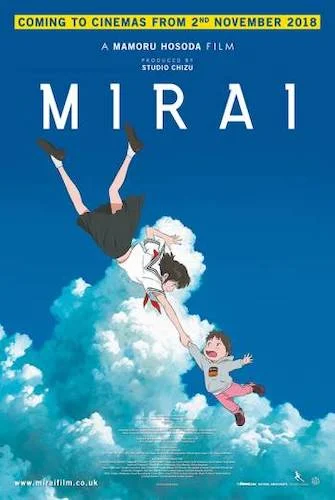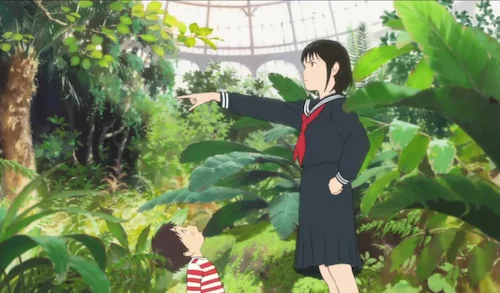Mirai
Remember The Girl Who Leapt Through Time? It was an earlier Mamoru Hosoda film that helped push him into the stratosphere; his company Studio Chizu uses the now-familiar image of the titular girl’s leap as their logo. After a few intriguing works later, Hosoda has released the third film through the studio known as Mirai, which also utilizes the ability to visit different places (not in a geographical sense) as a means of progression. This is the classic story that many people experience during childhood, where a kid experiences jealousy when a new baby comes in the picture. We saw a juvenile depiction not too long ago with The Boss Baby. Hosoda’s approach feels much more poetic and realistic, but with that realism comes the temporary woes of being a parent (amongst the many joys): the trouble making.
Main character Kun does express his anger of being replaced very well, and by that I mean he does not stop complaining and yelling the entire film. At least the main kids in The Boss Baby weren’t that spot on with how sibling rivalry sounds. If we were given that picture early on, and we moved on, that would be fine. To deal with piercing shouts and lengthy tantrums can be a bit of an ordeal. I do feel that it does enhance the prettier moments of the film rather wall; you notice Kun’s father struggling to shift roles (this isn’t his first child, but he has agreed to not leave his wife do most of the work this time around). Speaking of the maternal figure, Kun’s mom also has outbursts, but hers are much more nuanced and effective; you feel her frustration, whereas Kun’s outbursts seem like a test to endure.
Kun and his sister Mirai from the future
It does feel hard to complain about this film, because its imagination can be truly outstanding at times. The whinge-first-then-dream-sequence formula can be a bit old quickly, but we do get why Kun has to resort to ulterior methods in order to understand this new world of his in his own way. Once we get to these worlds, that’s when the film truly shines. The magical world Kun enters starts off a bit tame (his dog appears in a human form, then he imagines his new baby sister as a teenager), but the final adventure is easily the highlight of the film. When Kun decides enough is enough, and has the biggest outcry of the film, the dream world this time around more than represents that. It’s much lengthier than any other iteration, experiments with its subjects way more, and it even delves into nightmarish territory.
The stunning final act is one that honestly turned this film around for me. The entire picture began to make sense, and maybe I would find Kun’s stubbornness easier to tolerate on the second go with the entire story in mind. There are many loose threads that are tied rather nicely by this act. There are even moments that warrant a tear or two; sometimes, experiencing the lives of others on screen can still hit us tremendously. Looking back at Mirai as a whole, it does feel like life. You take the good with the bad. You storm through the moments of turmoil — especially if they are involving loved ones — to make it to the events that shine and sculpt your identity. Its animation, which can occasionally blow you away, keeps you going. The wrap up at the end makes every detail worthwhile.
Andreas Babiolakis has a Masters degree in Film and Photography Preservation and Collections management from Ryerson University, as well as a Bachelors degree in Cinema Studies from York University. His favourite times of year are the Criterion Collection flash sales and the annual Toronto International Film Festival.





